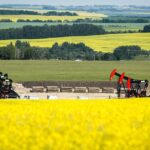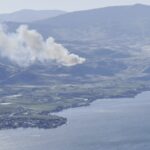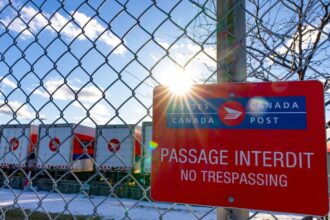Dans une démarche sans précédent, les directeurs généraux des plus grandes entreprises énergétiques du Canada ont publié une déclaration commune exhortant le ministre des Finances Mark Carney à recalibrer les politiques fédérales qu’ils accusent d’entraver la croissance du secteur énergétique national. La lettre, signée par des dirigeants représentant plus de 80 % de la capacité de production énergétique du Canada, avertit que les cadres réglementaires actuels pourraient déclencher des pertes d’emplois généralisées et compromettre la sécurité énergétique nationale.
“L’orientation politique actuelle crée une incertitude d’investissement qui menace la capacité du Canada à être compétitif à l’échelle mondiale,” a déclaré Michael Davidson, PDG de TransCanada Resources. “Nous assistons à une fuite des capitaux vers des juridictions avec des environnements réglementaires plus prévisibles, particulièrement aux États-Unis.”
Les leaders de l’industrie ont souligné plusieurs sujets de préoccupation, notamment le mécanisme fédéral de tarification du carbone, les restrictions sur les approbations de nouveaux projets, et ce qu’ils décrivent comme des “exigences de conformité onéreuses” qui n’existent pas pour leurs concurrents internationaux. Selon les données de l’industrie publiées avec la lettre, l’investissement en capital dans le secteur énergétique canadien a diminué de 18 % en 2024, tandis que les investissements comparables dans l’infrastructure énergétique américaine ont augmenté de 12 % pendant la même période.
Des économistes spécialisés dans l’énergie à l’Université de Calgary ont validé certaines de ces préoccupations dans une recherche récente publiée dans le Canadian Journal of Economics. Leurs conclusions suggèrent que l’incertitude réglementaire a effectivement contribué à environ 38 milliards de dollars d’investissements énergétiques reportés ou annulés depuis 2023.
Le ministre Carney, qui a assumé le portefeuille des finances il y a seulement huit mois, n’a pas encore émis de réponse formelle à la lettre. Cependant, lors d’une conférence de presse à Ottawa hier, il a reconnu l’importance du secteur énergétique pour l’avenir économique du Canada.
“Nous restons engagés dans une approche équilibrée qui respecte nos obligations climatiques tout en assurant que les producteurs d’énergie canadiens puissent prospérer dans un marché mondial en transition,” a déclaré Carney. “Ma porte reste ouverte aux leaders de l’industrie alors que nous naviguons ensemble ces défis complexes.”
Le moment choisi pour cette pression de l’industrie arrive alors que le gouvernement prépare sa mise à jour économique d’automne, qui devrait aborder les préoccupations continues concernant la compétitivité économique du Canada. Des sources parlementaires indiquent un débat significatif au sein du cabinet libéral concernant des ajustements potentiels au système fédéral de tarification du carbone et aux processus d’approbation réglementaire pour les nouvelles infrastructures énergétiques.
Les critiques de l’opposition se sont emparés de la lettre de l’industrie comme preuve d’un échec politique. Le critique conservateur en matière d’énergie, Michael Thompson, a qualifié la situation de “crise créée par le gouvernement lui-même” pendant la période des questions d’hier, tandis que les représentants du NPD ont appelé au maintien des protections environnementales tout en créant des soutiens ciblés pour les travailleurs du secteur énergétique affectés par les changements du marché mondial.
Les analystes internationaux de l’énergie de Bloomberg New Energy Finance sugg

























